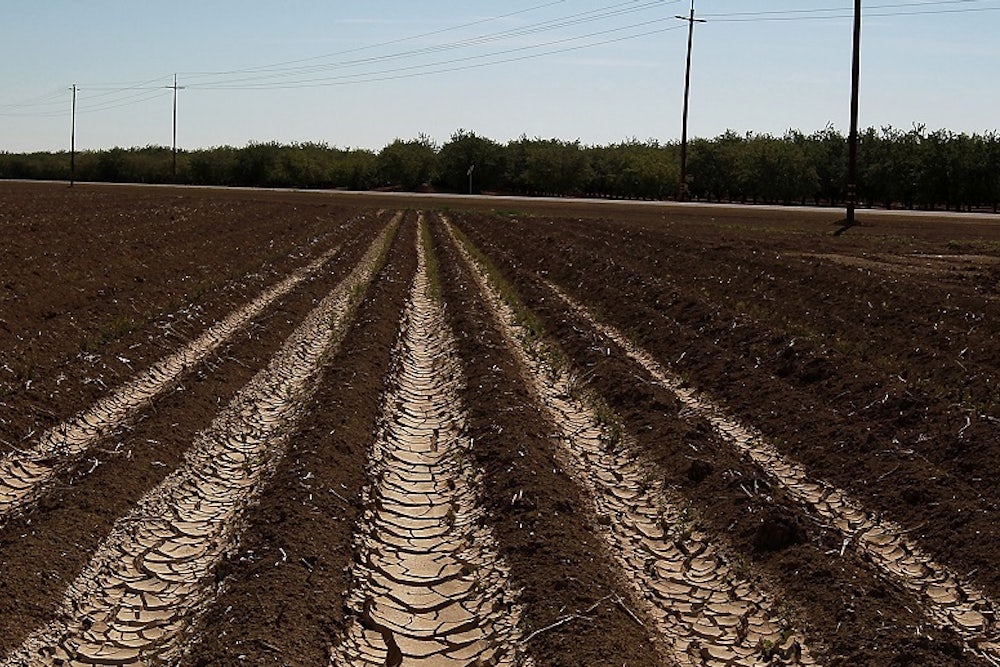Climate change is real, and it's happening right now. That's the conclusion of the scientists behind a large report released Tuesday by the federal U.S. Global Change Research Program, which is mandated by Congress to release a National Climate Assessment every four years. Approved and promoted by the White House, the report examines human-made climate change’s impact on 13 different sectors of American society and every region of the United States.
"Climate change is already affecting the American people in far-reaching ways," the report reads. "Certain types of extreme weather events with links to climate change have become more frequent and/or intense, including prolonged periods of heat, heavy downpours, and, in some regions, floods and droughts. In addition, warming is causing sea level to rise and glaciers and Arctic sea ice to melt, and oceans are becoming more acidic as they absorb carbon dioxide. These and other aspects of climate change are disrupting people’s lives and damaging some sectors of our economy."
The mention of the economy here is typical of the report, which addresses the economic impact of climate change subject only intermittently and obliquely, rather than exploring the subject in depth. Partly, that’s because estimating the economic cost is difficult. Partly it’s because that wasn't the goal of the report. But it deserves further attention.
Climate change would disrupt the U.S. economy in every way imaginable. Infrastructure in the U.S. and around the world has been built around certain climate patterns. As those change, the design of our cities, farms, and transportation systems will become obsolete. Intense droughts in the Western United States have already wreaked havoc on farmers and ranchers this year. Households will use more energy to regulate the temperature in their homes. Increased frequency of severe weather events such as Superstorm Sandy will cripple cities and towns. Rising sea levels will sink regions in Malaysia, the Philippines and other countries and increase international migration. Food and water supplies will be disrupted. Heat-related illnesses will put unnecessary stress on the medical system.
These are all deeply worrying potential human consequences of climate change, but they also have a major economic impact as well.
Tuesday's report only hints at such impact. A chapter on water resources notes, “The economic, social and environmental implications of climate change induced water cycle changes are very significant, as is the cost of inaction.” A chapter on energy: “Countless aspects of the U.S. economy today are supported by reliable, affordable, and accessible energy supplies.” On transportation: “The U.S. economy depends on the personal and freight mobility provided by the country's transportation system. Essential products and services like energy, food, manufacturing, and trade all depend in interrelated ways on the reliable functioning of these transportation components.”
So one must go elsewhere for greater detail on the subject—like a 2012 study conducted by the DARA Group and the Climate Vulnerable Forum that found that climate change had already lowered world GDP by 1.6 percent, or $1.2 trillion. By 2030, they estimated, the costs would rise to 3.2 percent of GDP. In 2010, Yale economist William Nordhaus calculated the cost as 2.8 percent of global output in 2095—equal to $12 trillion. In 2009, economist Richard S.J. Tol conducted a literature review of around a dozen estimates, with most predicting the cost of climate change to be between 1 and 2 percent of global GDP. Costs vary widely across the globe: Africa is generally found to fare the worst since many countries are already in a hot climate, while Eastern Europe might even benefit from climate change if, for instance, new trade routes open up.
All of these studies are subject to much uncertainty. That’s likely the reason the report examined climate change’s consequences on a sectional and regional basis. Yet, while the report shies away from offering a comprehensive cost total, the Obama administration may have to do so in the coming months. As part of its upcoming regulations on coal-fired power plants, the administration must use an estimate of the social cost of carbon (SCC)—in other words, the benefits from reducing carbon emissions—which is a value used in cost-benefit analyses of proposed environmental regulations. The SCC, which was last updated in November, is currently $37 per metric ton (in 2007 dollars). The administration may or may not revise this figure before the new regulations are released in June.
Ultimately, the goal of the National Climate Assessment was not to alert Americans to the economic cost of climate change a few decades from now, but to convince them that the human costs already exist today. After all, a significant percentage of Republicans still deny the reality of climate change, despite evidence that it's threatening their health and that of the planet. If researchers can convince them that it’s hurting their wallets, too, then maybe these holdouts will finally come around, providing the political capital necessary for sweeping changes.
